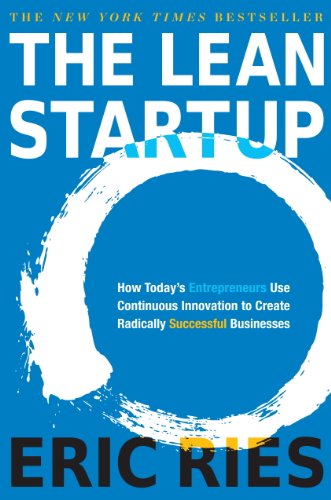

This article is an excerpt from the Shortform summary of "The Lean Startup" by Eric Ries. Shortform has the world's best summaries of books you should be reading.
Like this article? Sign up for a free trial here .
When you face a problem, how do you figure out what the root cause was? How do you learn what the right problem to tackle is?
The solution is the Five Whys: keep asking Why until you find the problem. But how do you do it correctly, and what pitfalls are there in the 5 Whys Analysis? Learn from this Lean Startup guide.
Introduction to the Five Whys Premise
A lean startup faces natural tension between opposites: fast and scrappy vs slow and methodical, hacky and agile vs robust and overdesigned.
Initially, building a product quickly and poorly gets you data faster. But you incur technical debt that will slow development in the future.
How do you decide where on the spectrum to lie? You need a natural feedback loop to tell you when you’re moving too slowly or too quickly by identifying the root cause of problems. When you face a new problem, root cause analysis tells you precisely why the problem happened, and suggests how to fix it. This prevents overdesign and prevents the problem from happening again.
The Five Whys Analysis
Find the root cause with the Five Whys method. When you see a problem, ask yourself five Whys in succession.
Here’s an example from Toyota where a machine broke down:
- Why did the machine stop? There was a power overload and the fuse blew.
- [If we stopped here, we would just replace the fuse. The fuse would blow again, and we’d replace it again, and so on. We would treat the symptom, but not the cause.]
- Why? The bearing was not lubricated.
- Why? The lubrication pump wasn’t pumping.
- Why? The shaft of the pump was worn.
- Why? The mechanic forgot to put a filter on, and metal scrap got in.
The final root cause from asking Five Whys is dramatically different from what you started out with. Because it’s a root cause, addressing it will solve all the problems up the line. If you had stopped asking why at each stage, you’d have addressed only a symptom that will recur, instead of treating the underlying disease.
In fact, if you kept asking why a few more times, you’d probably find other root causes to tackle. The mechanic may have gotten insufficient training on this equipment. Repair of this machine might not have a checklist, which is standard practice. Or the mechanic might have just been a bad hire – in which case bad hiring practices are to blame.
This example of Five Whys can be applied to any recurring problem in your startup, whether it’s a problem in customer service, engineering, accounting, or more.
The Output of Five Whys: Make a Proportional Investment
Asking Five Whys lets you figure out the root cause. Depending on how grave the problem is, you can then make a proportional investment to fix it.
This requires you to quantify the size of the problem. You can do this in units of resources – namely, man-hours or dollars.
A problem that occurs once and costs one man-hour to fix doesn’t need a heavy process to fix it.
A problem that occurs weekly and requires ten man-hours to fix will suck up 500 hours in a year – if you can spend 100 hours to solve it completely, it’s well worth it.
This calculus doesn’t have to be exact – often a rough estimate will tell you clearly if fixing the problem is clearly a huge gain, clearly a waste of time, or somewhere on the fence.
And you can solve problems iteratively too. For first-time problems discovered with Five Whys, make a smaller incremental improvement to the root cause. If the problem recurs, then you have more information about whether you want to invest more.
The Five Whys and proportional investments are a self-regulating process because they slow you down appropriately when major problems happen. The more problems you have, and the more severe they are, the more you invest in solutions to fix them. As better processes reduce the problems, you can speed up again. This adaptive approach helps avoid both over- and under-investment.
Avoiding the Five Blames
As powerful as the Five Whys is, it can be difficult to be objective. Sometimes a problem has multiple root causes, leading to finger pointing.
Here are a few ways to avoid the Five Blames:
- Everyone affected by the problem should be in the room when doing Five Whys, including the people who faced the problem on the ground and any managers involved in the decision making. This prevents the situation where the person not in the room becomes the scapegoat.
- Be tolerant of all mistakes the first time. Mistakes are often a result of bad systems, not bad people. If the organization has a culture of rewarding finding and fixing mistakes, people won’t feel suppressed in pointing out a problem. This can be done by positive messaging rewarding the discovery of mistakes, even if the problem reporter was the one who caused the problem in the first place. Treat mistakes as growth opportunities after Five Whys analysis.
- Start with smaller, newer problems to test out the Five Whys process. This will give you a more narrow problem, lower the emotional stakes, and limit the number of tangents and root causes. You’ll end up with easier actionables to implement, and when it succeeds, it’ll build confidence in the method. Don’t feel tempted to tackle major, existential “baggage” problems for your startup before your team is comfortable with the Five Whys – this might derail adoption.
- Appoint a Five Whys Master. This person should have senior authority to assign followup work and mediate disagreements that will inevitably come up in the Five Whys exercise.
The Five Whys is a natural feedback loop that slows you down when you’re moving too fast. By finding the root cause and fixing it, you’ll prevent costly mistakes that will cripple your speed in the long run.
Question: Think of a recent problem you’ve had in your startup. Apply Five Why’s thinking to it. What does this suggest you should fix at each stage of the Why? Is the root cause something you hadn’t noticed before?
———End of Preview———

Like what you just read? Read the rest of the world's best summary of "The Lean Startup" at Shortform . Learn the book's critical concepts in 20 minutes or less .
Here's what you'll find in our full The Lean Startup summary :
- How to create a winning Minimum Viable Product
- How to understand how your startup will grow
- The critical metrics you need to track to make sure your startup is thriving






